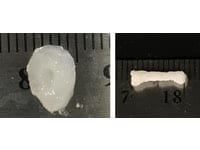Scientists have developed a platform that prints bioink into 3D tissues using a supporting slurry of alginate microgel beads.
The technique overcomes limitations of conventional bioprinted scaffolds and holds promise for tissue engineering, regenerative medicine, drug screening and developmental biology. Scientists have developed a platform that prints bioink into 3D tissues using a supporting slurry of alginate microgel beads. The technique overcomes limitations of conventional bioprinted scaffolds and holds promise for tissue engineering, regenerative medicine, drug screening and developmental biology.
For more information see the IDTechEx report on 3D Bioprinting 2018 – 2028: Technologies, Markets, Forecasts . Scaffold bioprinting, as the name suggests, involves depositing cells onto a temporary biodegradable template when fabricating tissue in the lab. The approach is imperfect; it’s associated with cytotoxicity and interrupted cell-cell interactions. As an alternative, a few studies have tested microgel supports in a scaffold-free process. ‘The challenge in translating a scaffold-free […]
Case Study: How PepsiCo achieved 96% cost savings on tooling with 3D Printing Technology
Above: PepsiCo food, snack, and beverage product line-up/Source: PepsiCo PepsiCo turned to tooling with 3D printing...





0 Comments